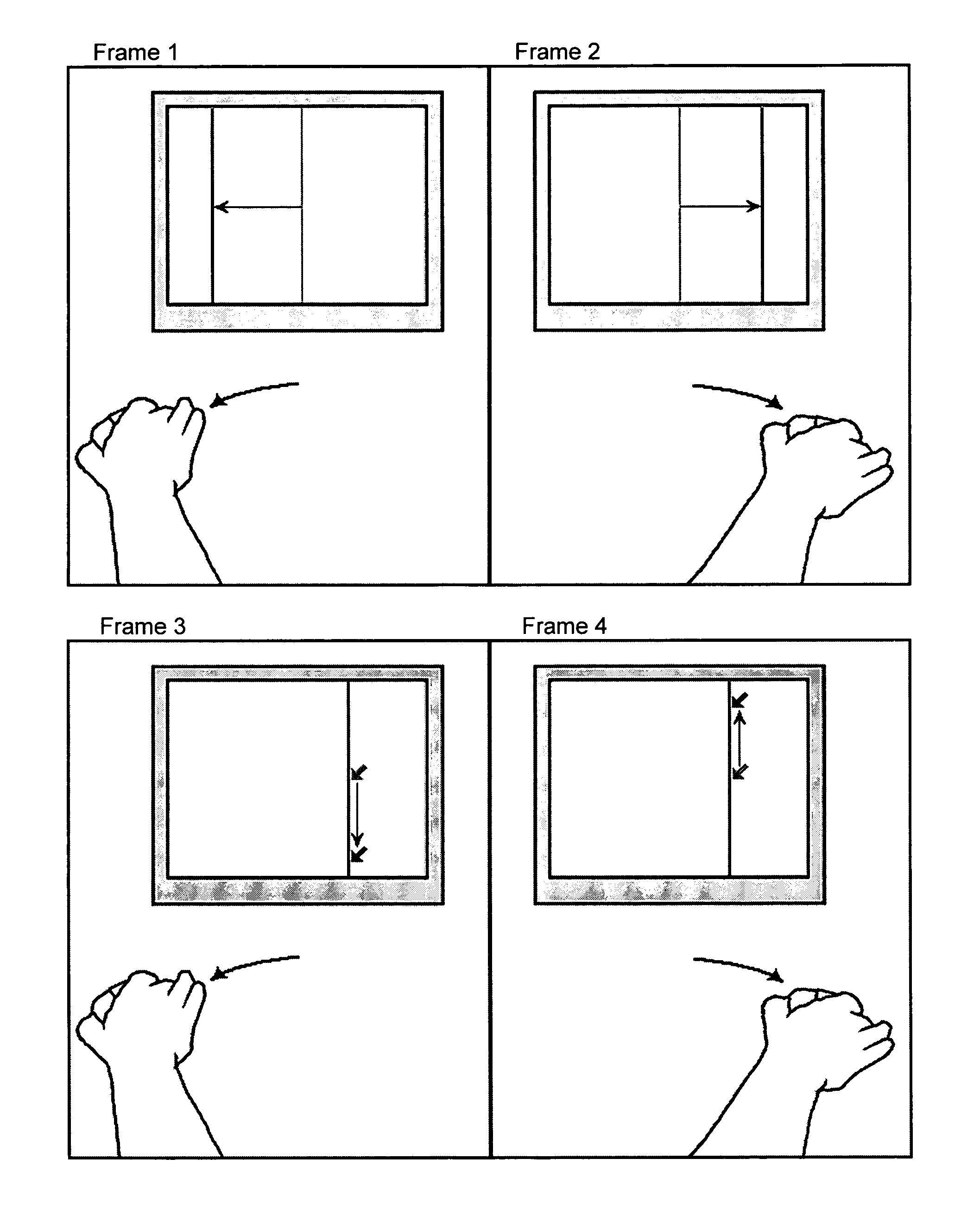Process and apparatus for providing a one-dimensional computer input interface allowing movement in one or two directions to conduct pointer operations usually performed with a mouse and character input usually performed with a keyboard
a computer input and one-dimensional technology, applied in the field of computer input, can solve the problems of more conventional pointers that might not work for some users or for any user in some situations, and are not commercially available, and are based on sophisticated (and expensive) pointer systems
- Summary
- Abstract
- Description
- Claims
- Application Information
AI Technical Summary
Benefits of technology
Problems solved by technology
Method used
Image
Examples
Embodiment Construction
[0050]Detailed descriptions of the preferred embodiment are provided herein. It is to be understood, however, that the present invention may be embodied in various forms. Therefore, specific details disclosed herein are not to be interpreted as limiting, but rather as a basis for the claims and as a representative basis for teaching one skilled in the art to employ the present invention in virtually any appropriately detailed system, structure or manner.
[0051]The invention uses the emulation of various actions usually performed by a computer pointer (e.g., pointing and clicking), and typing English words to a software application with an on-screen keyboard as examples of the invention, yet, the invention is much more general and not limited, for example, to words, but rather is a method that can be applied to any real or contrived pointer or character input activities.
[0052]The common theme that runs throughout the different forms of the invention is that of a One-Dimensional contro...
PUM
 Login to View More
Login to View More Abstract
Description
Claims
Application Information
 Login to View More
Login to View More - R&D
- Intellectual Property
- Life Sciences
- Materials
- Tech Scout
- Unparalleled Data Quality
- Higher Quality Content
- 60% Fewer Hallucinations
Browse by: Latest US Patents, China's latest patents, Technical Efficacy Thesaurus, Application Domain, Technology Topic, Popular Technical Reports.
© 2025 PatSnap. All rights reserved.Legal|Privacy policy|Modern Slavery Act Transparency Statement|Sitemap|About US| Contact US: help@patsnap.com



